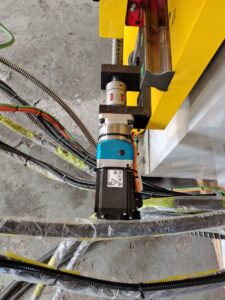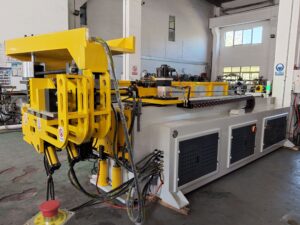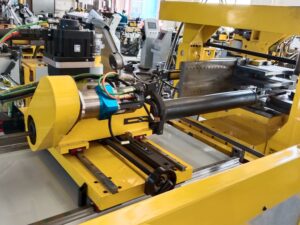Types of Pipe Cutting Machines
- Rotary Pipe Cutters: Ideal for cutting metal pipes, rotary cutters are compact and efficient. They work by applying pressure around the circumference of the pipe, gradually tightening and severing the pipe perfectly.
- Band Saw Cutters: These are used for high-volume, repetitive tasks. Band saw cutters offer precision and can handle various materials.including metal, plastic, and composite pipes.
- Tube Cutting Lasers: These machines use high-powered lasers to cut through metal pipes with extreme precision.
- Orbital Pipe Cutters: Designed for precision and minimal pipe deformation, orbital cutters are perfect for thin-walled pipes.
- Chop Saw Cutters: Best for heavy-duty cutting tasks, chop saws can handle thick pipes made from tougher materials like stainless steel and cast iron.

Key Features to Consider
1. Material Compatibility
Understanding the material of the pipe you intend to cut is crucial. Different machines optimized for different materials. affecting the blade type and cutting technique.
2. Precision and Quality of Cut
Look for machines that offer clean and smooth cuts, which are essential for the integrity and fit of the pipe in any assembly. Precision is particularly crucial where safety and performance are paramount.
3. Speed and Efficiency
Consider the operation speed of the pipe cutting machine. faster machines reduce turnaround time .
4. Durability and Maintenance
The build quality of a pipe cutting machine determines its longevity and reliability. Opt for machines that are easy to maintain and come with accessible after-sales support and warranty.
5. Safety Features
Safety is paramount when operating any heavy machinery. Features like emergency stop buttons, blade guards heat protection are essential for operator safety.
Best Practices in Pipe Cutting
Setting Up for Success
- Proper Installation: Ensure that your pipe cutting machine is set up on a stable surface and is properly calibrated before use.
- Regular Maintenance: Regular checks and maintenance extend the lifespan of the machine and ensure optimal performance.
- Training and Usage: Operators should be thoroughly trained on the machine to handle it safely and efficiently.
Cutting Techniques
- Measuring and Marking: Always measure and mark your cutting line accurately to ensure a straight cut.
- Supporting the Pipe: Properly support the pipe on both sides of the cut to prevent any movement that could lead to inaccuracies.
Conclusion
prioritizing features that match your specific needs. you can select a tool that not only meets but exceeds your expectations. a well-chosen pipe cutter is an investment in quality.
Whether for industrial, commercial, or personal use, the right tools make all the difference in achieving professional results and maintaining safety standards.





